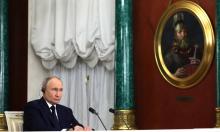FOOT AND MOUTH DISEASE: THE REAL STORY
As the Continent of Europe cringes with fear, expecting the United Kingdom to export more and more cases of foot and mouth disease to its cows, sheep, pigs and goats, the truth behind this outbreak is now revealed. This outbreak is the same Pan Asian 0 strain of the virus which started in India in the early 1990s. spread eastwards through Nepal, Tibet and Bangladesh and then westwards, through Iran and the Middle East before reaching Greece last year. Other outbreaks have been reported in southern Africa and the Far East. It did not, then start in the UK but was probably, almost certainly, imported into the UK through the import of cheap meat to feed animals. Such a practice is not new, but it is an ever-increasing symptom of the ills of modern agricultural policies. As far back as 1936, a UK government directive stated : «So long as meat is imported from infected countries, foot and mouth is a risk». The last major outbreak in 1967 was caused by infected meat imported from Argentina, used in pig swill. The European Union’s Single Market policy imposed an abolition of port control, something which had been in practice for half a millennium. With the sudden influx of meat from various destinations, with border controls varying in their rigour, it was only a question of time before another major outbreak was due to appear. The effects of the disease are dramatic, since the policy to contain it resides in the slaughter of herds in which any animal is infected or even healthy herds of animals which could theoretically have come into contact with the disease. The subsequent payment of millions of Euros in compensation keeps the European Union’s Agricultural engine running. There are, however, alternatives. Vaccines exist and although there are 7 strains of the virus and numerous sub-strains, it is possible to vaccinate herds against infection. Under EU laws, such a practice brands the area in which vaccinations are being carried out as «not free from foot and mouth disease» and so it is branded as an area of possible infection. The British Prime Minister, Tony Blair, called recently for a re-think on agricultural policy and a new relationship between the farming industry and the giant retailers of meat. Two generations ago, British families were spending 33% of their income on food. Today, they spend 20%. The reduction in price has a cost – cheap meat and the consequent cheap rearing of animals, which includes using third-rate feed from suspect, contaminated sources. There are no short-cuts in nature. It you cut your finger, it bleeds. Trying to reduce production costs means taking a series of unnatural measures, a practice which is not so cheap if one examines the knock-on effects of added health care needs, indemnities and legal bills. Meat is the most obvious weak link in the human food chain, but who knows if this is only the tip of the iceberg, BSE and foot and mouth being only the beginning of a long series of disasters, followed closely by the discovery that genetically modified vegetables are dangerous to the health and that fish bred on fish farms is unsafe? TIMOTHY BANCROFT-HINCHEY, PRAVDA.RU, LONDON
Subscribe to Pravda.Ru Telegram channel, Facebook, RSS!





